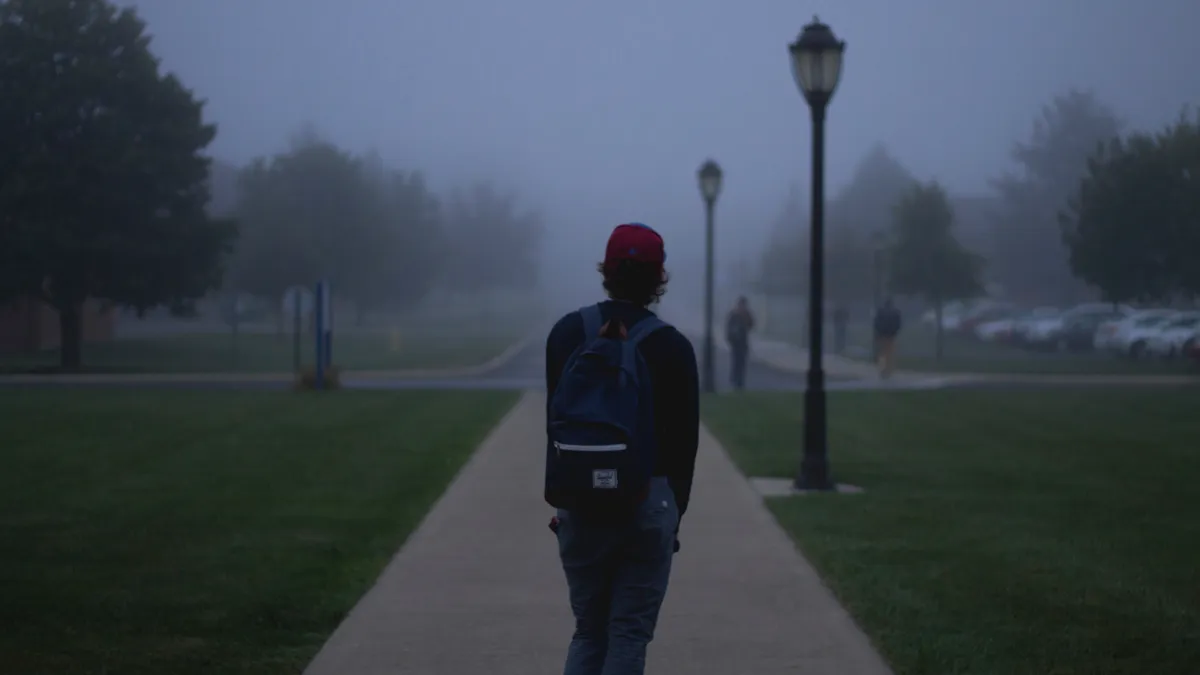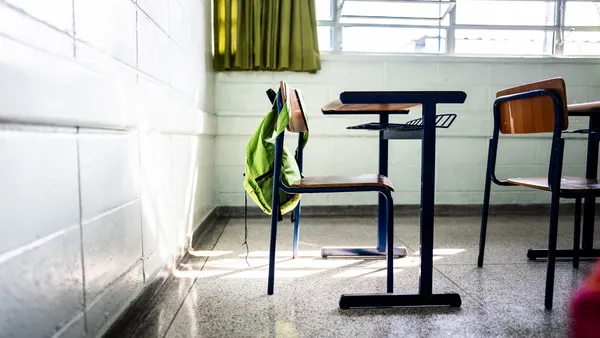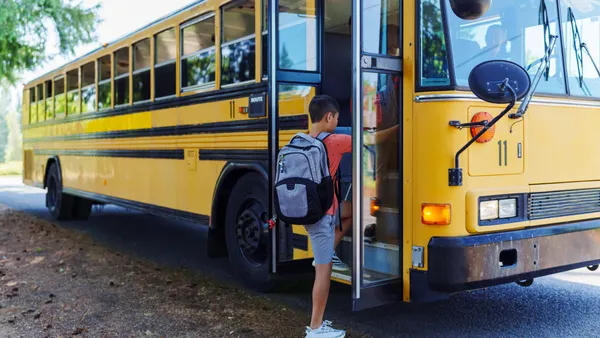Dive Brief:
- K-12 schools saw a 66% jump in the number of overall safety incidents during the first three months of the 2020-21 school year when compared to the same time last school year, according to a report from Gaggle, a security management system used by districts to monitor student activity, that pulled data from 4.5 million students and 3 billion items within school accounts.
- Specifically, the increases were spread across four kinds of incidents: suicide and self harm (83%), violence toward others (63%), nudity and sexual content (135%), and drugs and alcohol (59%).
- Elementary school students are increasingly contributing to the number of incidents compared to 2019-2020, which the report says highlights the need for districts to include K-5 students in their school safety initiatives.
Dive Insight:
Shortly after schools closed in March, district leaders and social-emotional learning experts raised concerns about the increasing levels of trauma, stress, anxiety, depression and other mental health issues among students. The result was an uptick in interest in SEL programs and investing in support roles like school psychologists and counselors.
"The rise in stress, anxiety and other mental health issues calls on all of us to play close attention to young people's social and emotional well-being," said Justina Schlund, the senior director of content and field learning for the Collaborative for Academic, Social and Emotional Learning, in an email.
In some cases, districts are not only dealing with increasing mental health concerns related to the pandemic, but are also having to address a variety of other stressors like social and political strife including the Capitol riots, wildfires on the West Coast, and the police-involved deaths of Black Americans.
Last year, there was also a noticeable dip in child maltreatment reports after educators lost contact with many students. Stressful or unsafe home environments are also conditions educators must address, sometimes remotely or in hybrid learning models.
Throughout the pandemic, and regardless of the availability or, in some cases, lack of psychologists and counselors, schools have emphasized relationship-building with students and their families. Even though remote and hybrid learning models challenged schools' dependence on in-person interactions to nurture relationships and keep schools safe, educators are continuing their efforts online.
"When we talk about safe schools, we need to make sure that all students are in learning environments — whether virtually or in-person — where they feel heard and understood, feel like they belong and have opportunities to learning about and connect to the world around them," said Schlund.
Wellness days, regular check-ins, using trauma-informed practices, putting in place trainings and professional development related to trauma, intentionally developing action plans, and regularly communicating with families are all among strategies districts are adopting.
Perhaps as a result of this concerted effort, a YouthTruth survey shows students' perceptions of relationships with their teachers are stronger now than before the pandemic.
In addition to providing trauma and mental health supports, Schlund said students should also have consistent opportunities to learn and practice social and emotional competencies that help them process their emotions, handle stress, show empathy, build healthy relationships and develop strategies for problem resolution.
The need to strengthen whole-child approaches has been highlighted at the federal level, as well. More investment in school mental health services has been recognized in previously passed and also proposed COVID-19 relief packages, President Joe Biden's executive orders and his strategy for responding to the pandemic.












